Notes on our collaboration with artist Todd Gray and his “Cartesian Grigri.”
Early in 2019, Todd Gray approached Peter Tolkin with the idea of collaborating on the installation design for his exhibition at David Lewis gallery. He explained his concept of “Euclidean Grigri” (now “Cartesian Grigri”) and asked if we could help him to find a way to insert the “Grigri” into the gallery. Not being familiar with the term, at first, we took it to mean that he wanted “to mess” with the neutral space of the gallery. We came to learn that Grigri is associated with Voodoo. Gris-Gris are amulets adorned with scripture to ward off evil spirits or bad luck. Originating in Ghana, these amulets were often attached to buildings as a form of protection. The practice came to the United States via enslaved Africans who used the Gris-Gris as a form of black magic; sometimes using it as retribution against their brutal masters (paraphrased from Wikipedia definition of Gris-Gris).
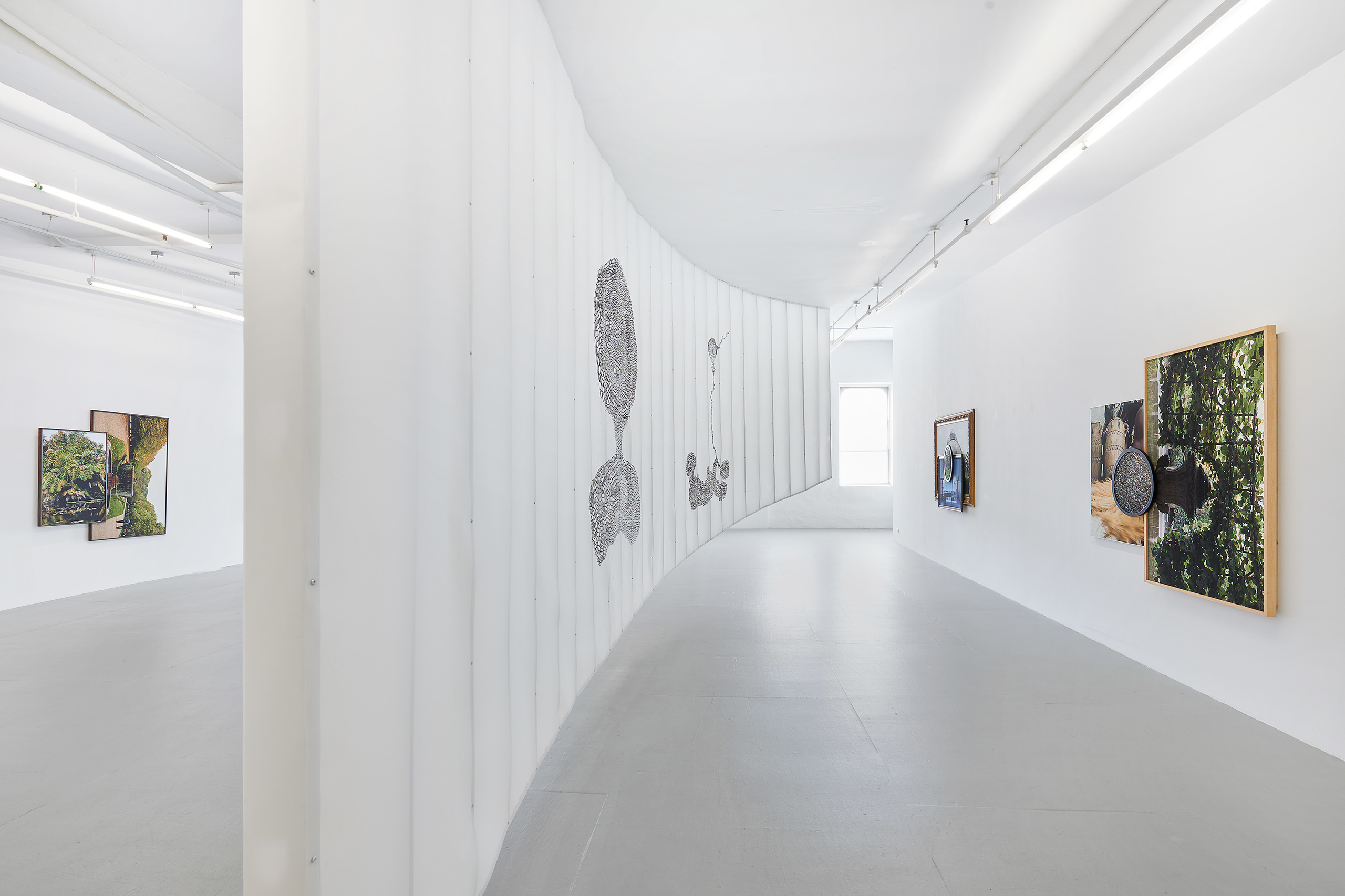
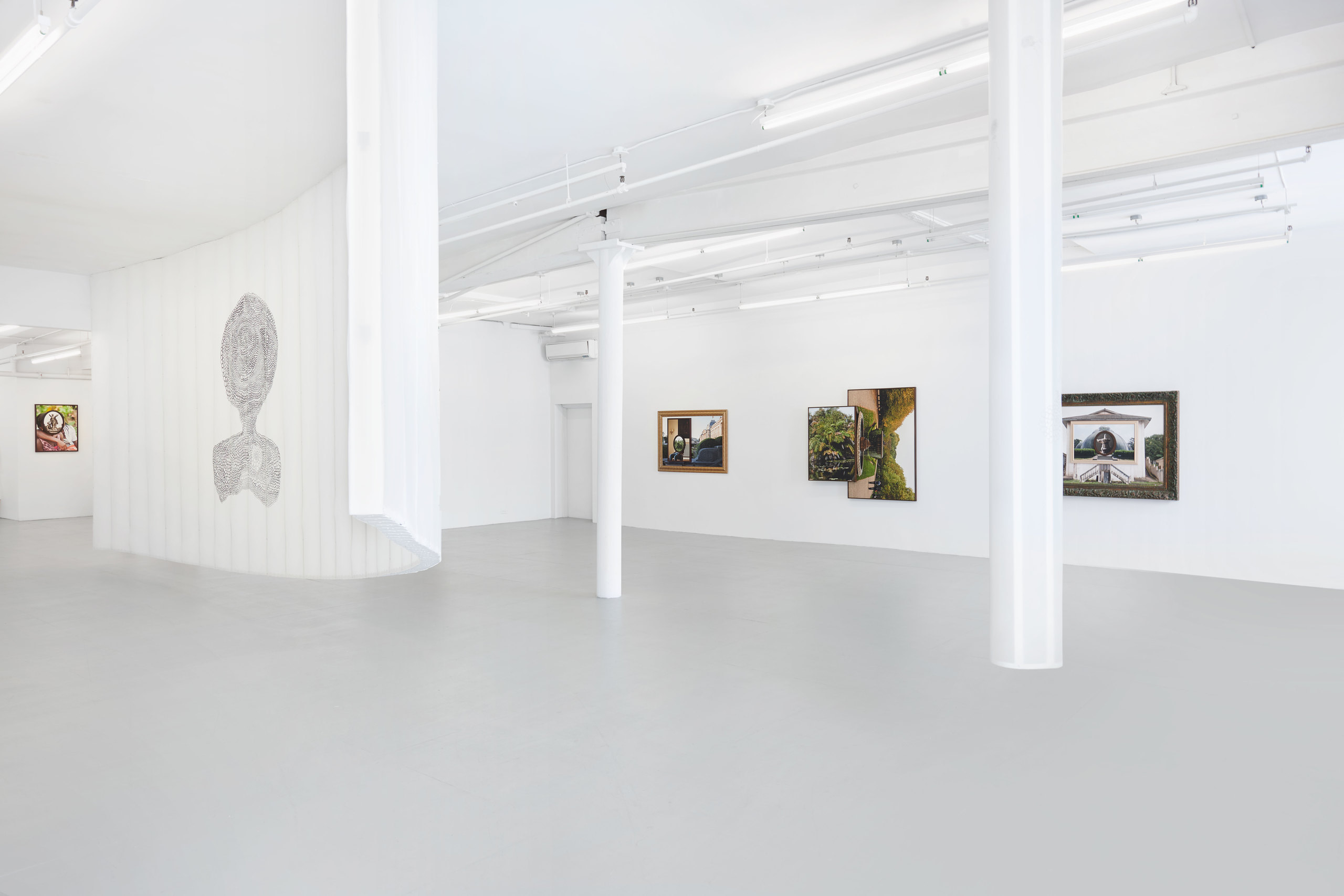
Courtesy of artist and David Lewis Gallery
Photographer: Phoebe d’Heurle
Todd and Peter share a mentor, the artist, photographer, and theorist Allan Sekula. (Peter attended CalArts a few years after Todd did, graduating with an MFA in photography, before going on to architecture school.) Allan Sekula’s ideas impacted both Todd's work as an artist and Peter’s as an architect. Todd’s work is influenced by Allan Sekula’s critical documentary practice and how it problematizes ideas of geography and place. The site of Todd’s work is a constructed heterotopia (an un-grounded, layered, non-space) that is transported and located onto the gallery wall. Todd uses a process of making that involves radical juxtapositions, fracturing and layering procedures, to create works that are transitory and in a state of flux. There is no adherence to working within a distinct genre of photography, such as: landscape, still life and portraiture. Instead different genres are combined. Images of American cultural icons are placed next to images of unknown foreign places. Cartesian rational spaces (such as neoclassical and colonial architecture) are set off against non-geometric (post-Cartesian) “organic” landscapes. In all the work, social and political forces are at play, and unconscious mental and physiological associations emerge.
For this NY installation, we discussed ways to juxtapose a series of extraneous architectural elements against the Cartesian and “neutral” white gallery space. We landed on inserting an “upside-down” curved wall and column covered in a translucent paper veil that Todd would draw on. The insertion of this wall and column, two primary figures in the history of architecture, would serve as a kind of Gris-Gris amulet that would hang in the gallery.
The curved geometry of the wall we introduced was also a loose reference to the geometry of the entrance wall of Todd and Kyungmi Shin’s home in Ghana. The house, designed by Los Angeles architect Ilaria Mazzoleni, is located on the Gold Coast, close to where slave ships once left for the Americas and the Caribbean.
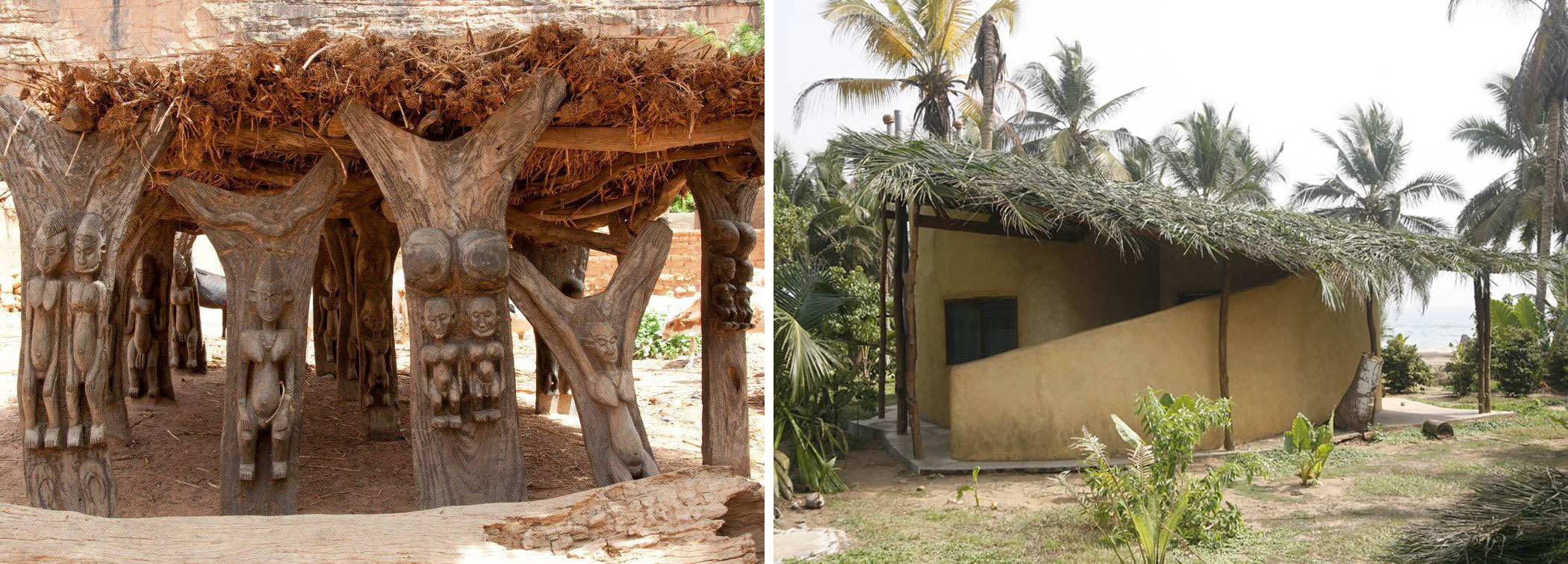
Left: Sculpted wood support by the Dogon people
Right: Todd Gray and Kyungmi Shin Ghana House by architect Ilaria Mazzoleni
The hanging curved wall and column we inserted into the gallery were constructed of light gauge metal studs commonly used to erect gallery partitions. To curve the wall, we used a system designed to allow curvature in two directions. The framing is painted white, to match the gallery walls and clad with Mylar.
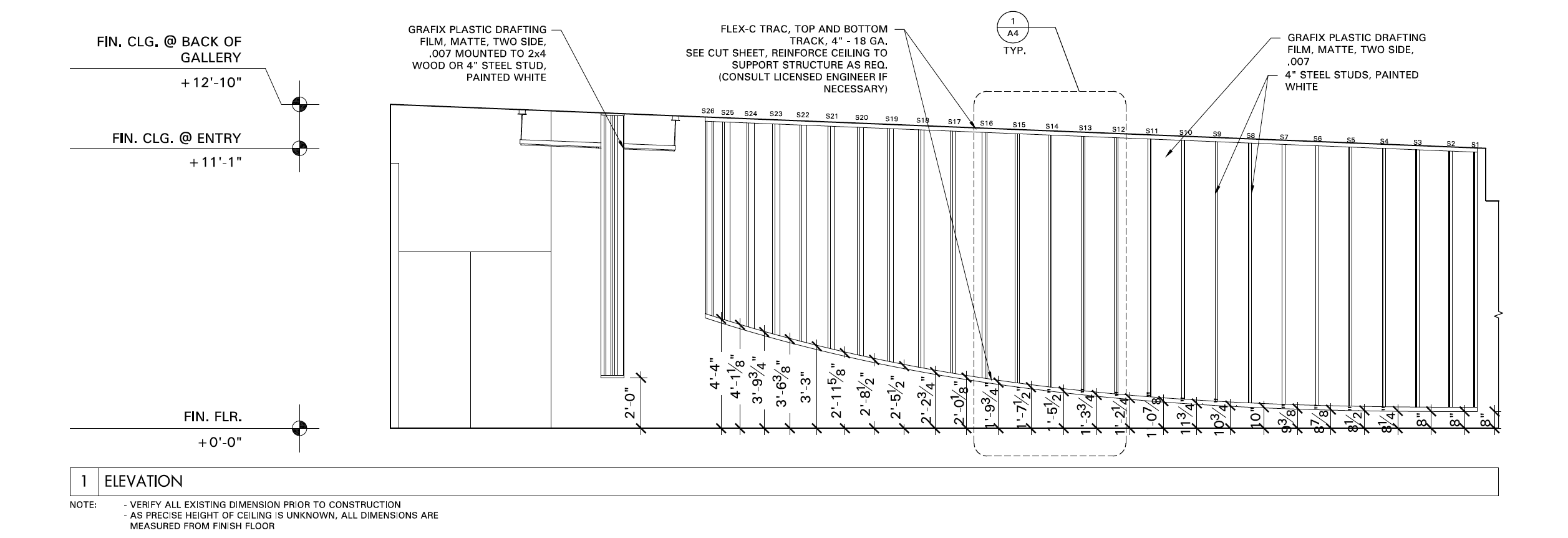
Mylar is used to make tech sails, drum skins, architecture drafting film, and it is the substrate of many photographic films (Kodak trade-name: ESTAR). The translucent quality of the Mylar gives these elements a “ghosted” ephemeral quality and allows light through. This material is also reference to African drums, typically made using goatskin, and to the sails of slave ships.
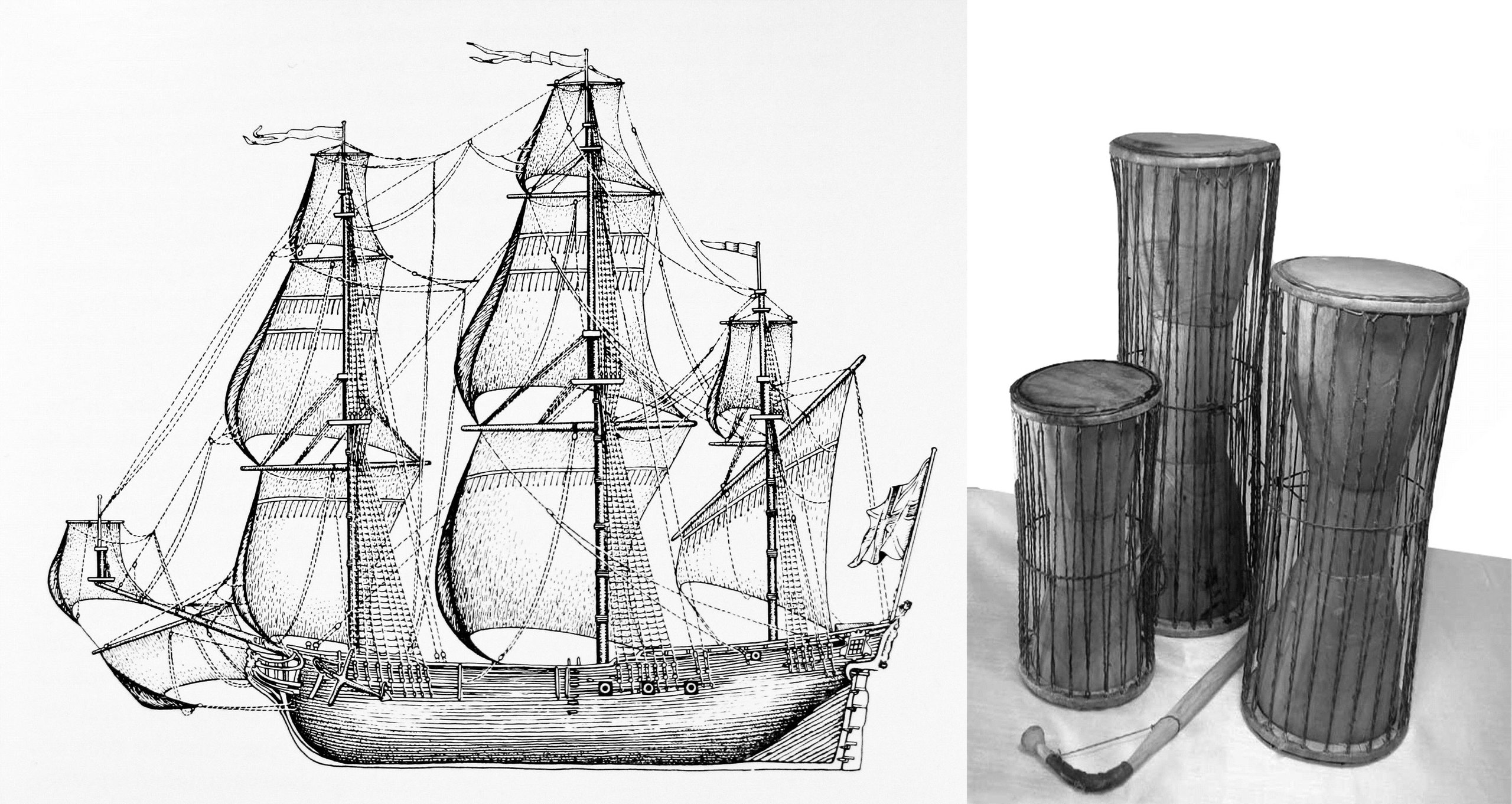
Left: Drawing of slave ship
Right: Talking drums from West Africa
Working with Todd on his installation gave us a close-up view into his creative process and allowed us to contribute to what ARTFORUM’s critic Catherine Taft describes as story-telling, where, “A pop star gets abstracted into a folkloric hero, portals open up onto ancestral homes, and time is collapsed to reveal the postcolonial shifting of power.”
Side note: In 2008, Peter travelled to Ghana with architect and historian Mabel Wilson to work on architectural research project that looked at the “Tropical Modernist” architecture of West Africa. A summary of Peter and Mabel's research can be found in Places journal.
 Work
Office
Work
Office